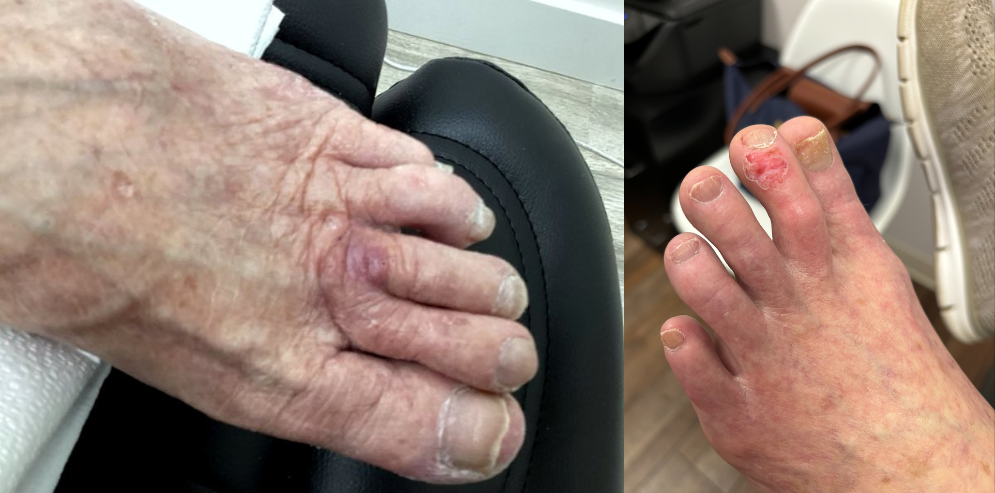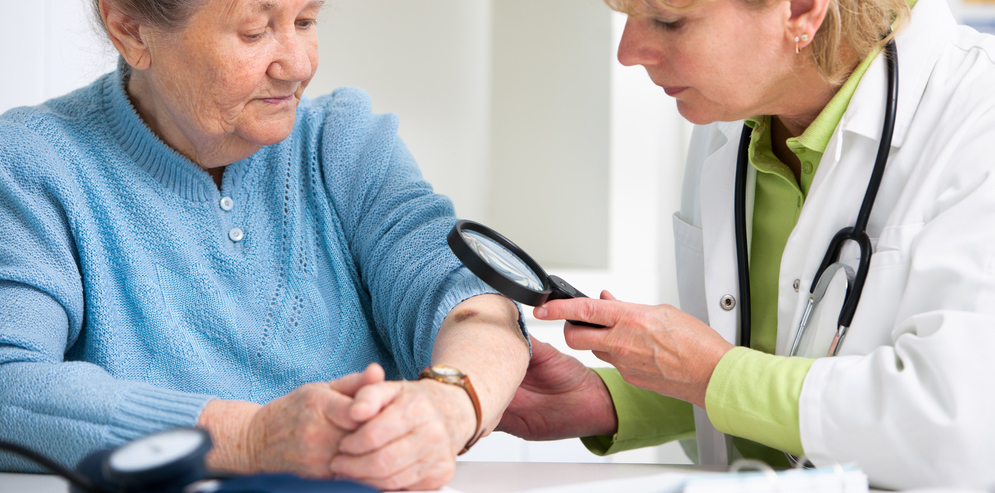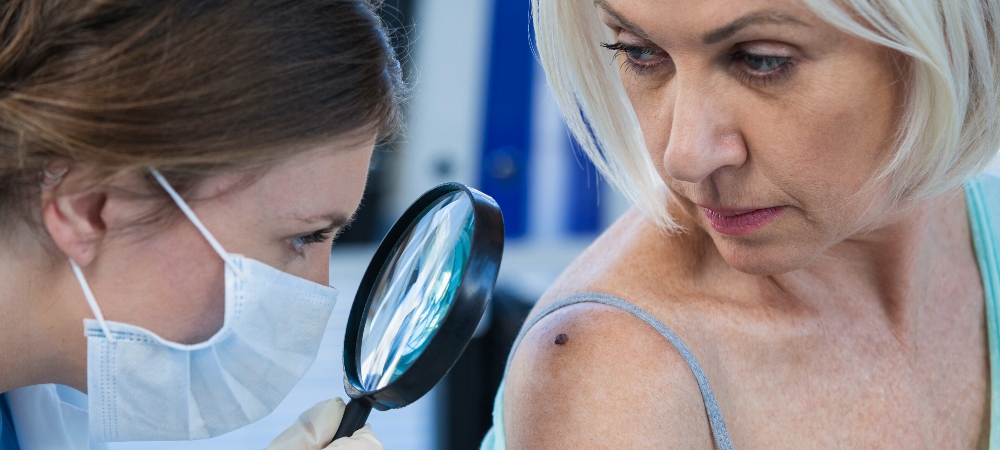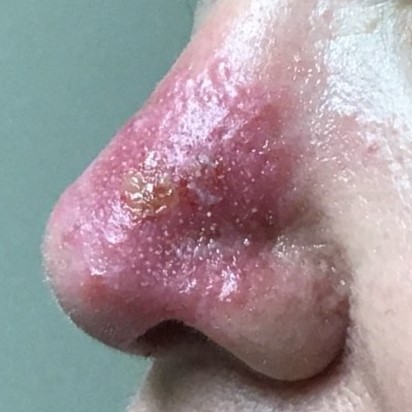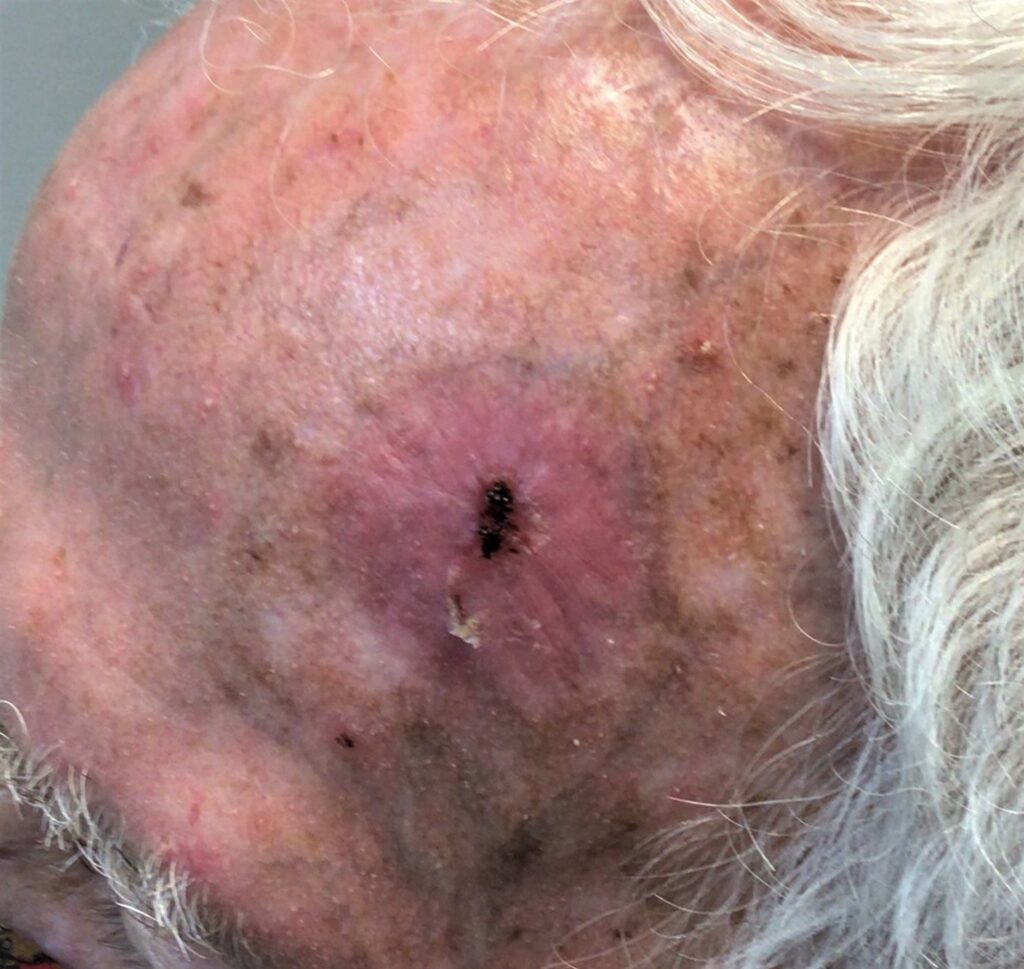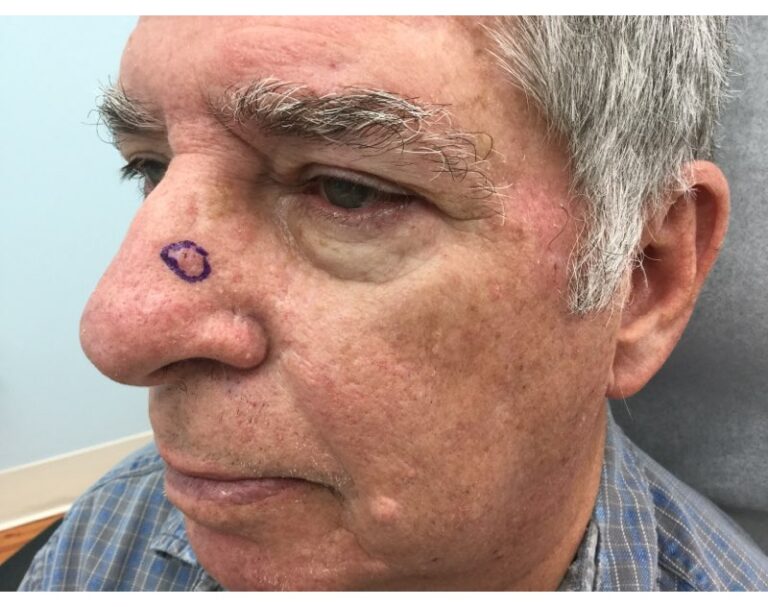
Basal cell skin cancer is the most common type of skin cancer, making up about 80% of diagnoses. Thankfully, it has a very good outlook to be cured when detected and treated early. With that said, it’s important to know the symptoms of basal cell skin cancers to look for. Learn more about the different basal cell skin cancer symptoms that may present on the skin in the guide below.
Symptoms of Basal Cell Skin Cancer: What to Look For
- An Open Sore: If you have an open sore on your skin that never seems to heal, lasting for weeks or repeatedly healing and then returning as the same open sore, it may be basal cell skin cancer.
- Small Pink Growth: Basal cell skin cancer may present as a small pink growth with a raised, rolled edge and a lowered center that is crusted over. Small surface-level blood vessels may develop in the center over time, too.
- Scar-Like Growth: Look for scar-like growths with a coloring that is flat white, yellow, or waxy. The skin may look shiny and pulled taut, with uneven borders. No basal cell skin cancer symptoms should ever be ignored, but this one is of particular importance because it can indicate an invasive case of basal cell skin cancer.
- Shiny Bump: You may find a shiny bump or nodule with coloring that appears pearly or clear, white, red, or pink. In people with darker skin, the coloring may be tan, black, or brown, which can cause it to be mistaken for an innocent mole. About 50% of basal cell skin cancers diagnosed in people with darker skin are pigmented. If you’re questioning it, have it checked out by a doctor.
- Red, Irritated Skin: Some individuals get a reddish or irritated patch of skin – commonly on the face, shoulder, chest, arm, or leg – that may be crusted over, itchy, and painful.
Basal Cell Skin Cancer Exams and Tests
During an exam, a healthcare provider will inspect your skin and examine the shape, size, pigment, and texture of any suspicious areas of your skin. If your healthcare provider thinks you may have basal cell skin cancer, a piece of skin will be removed. This is called a skin biopsy. The sample is then sent to a lab for examination. Biopsies are necessary to confirm basal cell cancer as the diagnosis cannot be based solely on the appearance of your skin.
Some Basal Cell Skin Cancer Symptoms Don’t Match the Above
In some cases of basal cell skin cancer, the symptoms and appearance of the skin cancer area do not match any of those listed above. Some individuals don’t notice symptoms of basal cell skin cancers on their skin because it’s mistaken for other common skin conditions like eczema or psoriasis. If you’ve developed a new spot on your skin and you’re questioning its health, it’s important to see a doctor for a professional opinion.
Get to Know Your Treatment Options with GentleCure™
If you have a skin spot that matches the basal cell skin cancer symptoms, consult with your doctor without delay. In the event that you need treatment, there are several options to consider, including Image-Guided Superficial Radiotherapy (Image-Guided SRT). Learn more about how Image-Guided SRT uses radiation to treat common skin cancer when you call GentleCure™ at 855-936-4411 or contact us online. You’ll be connected with a skin cancer information specialist who can answer the common questions you may have, including what to expect during the treatment process.
